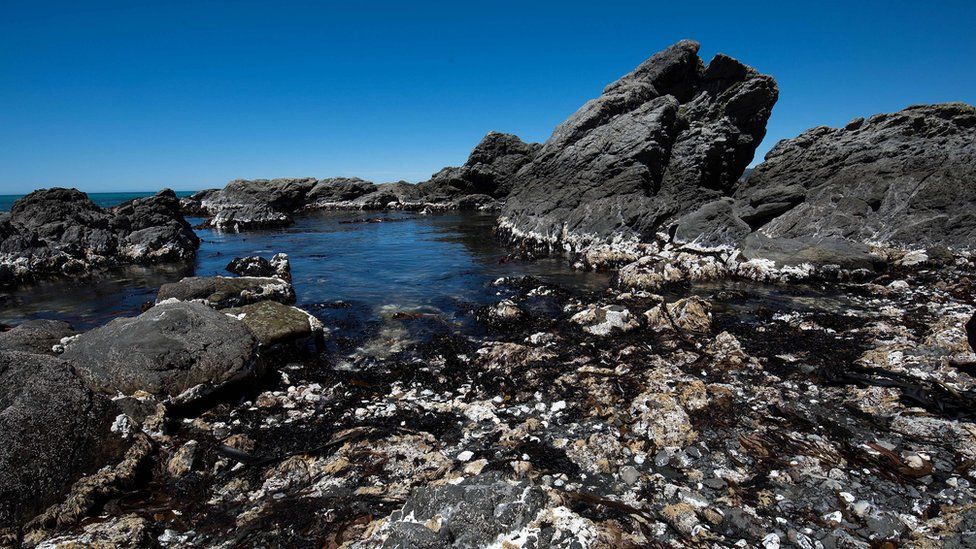New Zealand earthquake gives unexpected benefit
- Published

It's difficult to find positives from a major natural disaster, but an earthquake in New Zealand last year appears to have saved one local authority millions of dollars in coastal defences.
The Kaikoura earthquake of November 2016 had a measured magnitude of 7.8 and cost the lives of two people on New Zealand's south island. However, the local council in the resort town of Kaikoura says that coastal uplift caused by the quake raised 120 km (75 miles) of coastline by between one to eight metres (3-26 feet), potentially putting previously at-risk infrastructure out of harm's way from sea erosion, Radio New Zealand reports.
Local mayor Winston Gray said that the council had previously expected to budget millions of dollars on the coastal erosion issue, which has been a major concern for towns along South Island's east coast. "Now with the uplift, certainly it has taken the issue away for a given period of time," he told Radio New Zealand, "How long, we don't know."
Environmental scientists say they are still collecting and studying data on the coastal issue, while restorative work is still ongoing to clear hazards and repair the estimated NZ$900m ($631m, £493m) worth of damage caused by the quake to roads, businesses and homes.
However, the new coastline isn't to everybody's taste. One resident in Waipapa Bay, which saw a particularly dramatic uplift of eight metres says the virgin seafront is now an eyesore. "It is ugly, it is white, it is smelly. There are all these rock pools that are just slimy, green pools of the most hideous mosquitoes you've ever seen," she told Radio NZ last month.
Next story: South Korea starts 'coinless society' trial
Use #NewsfromElsewhere to stay up-to-date with our reports via Twitter.